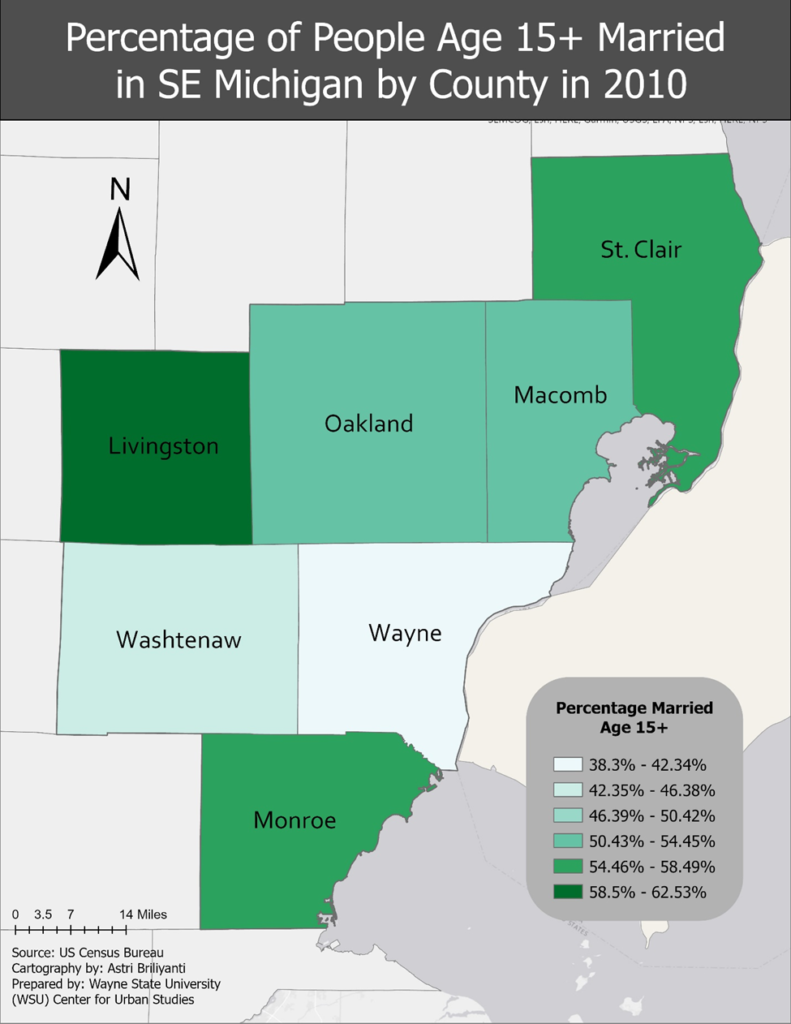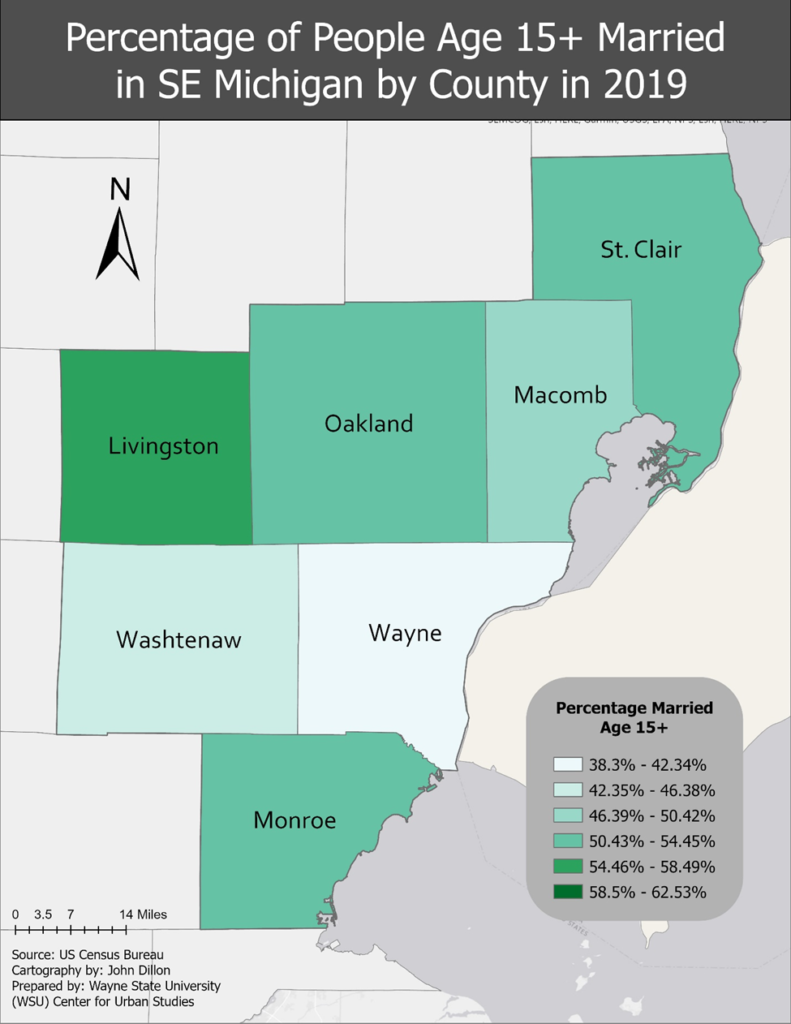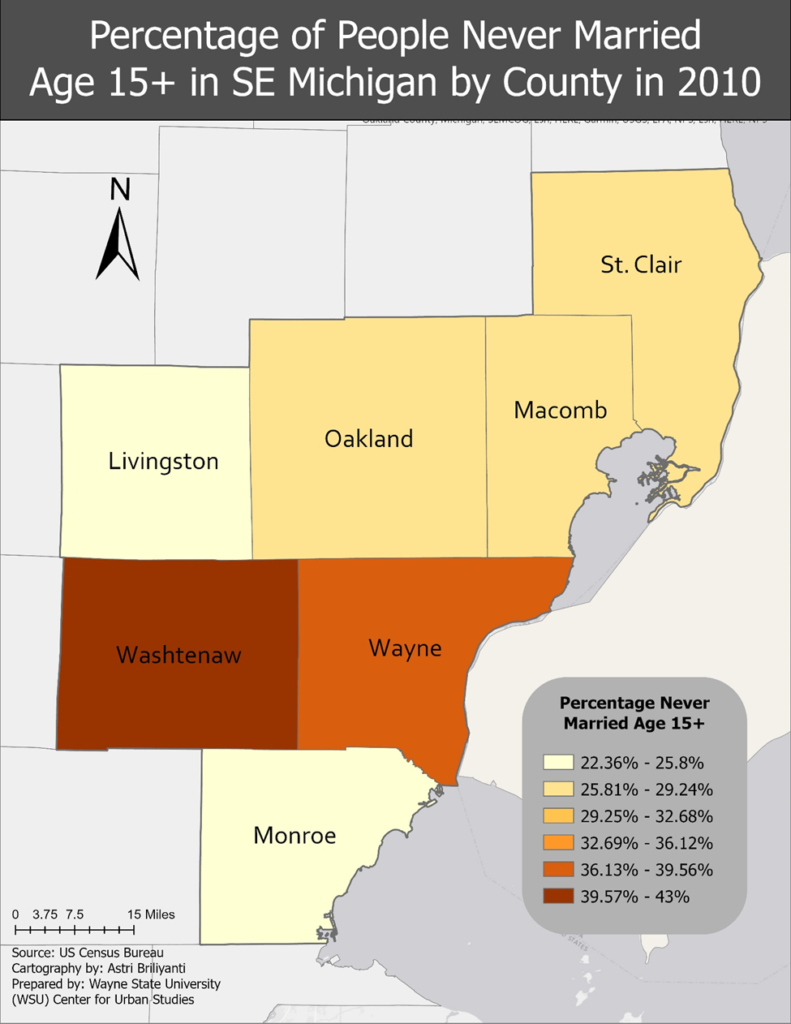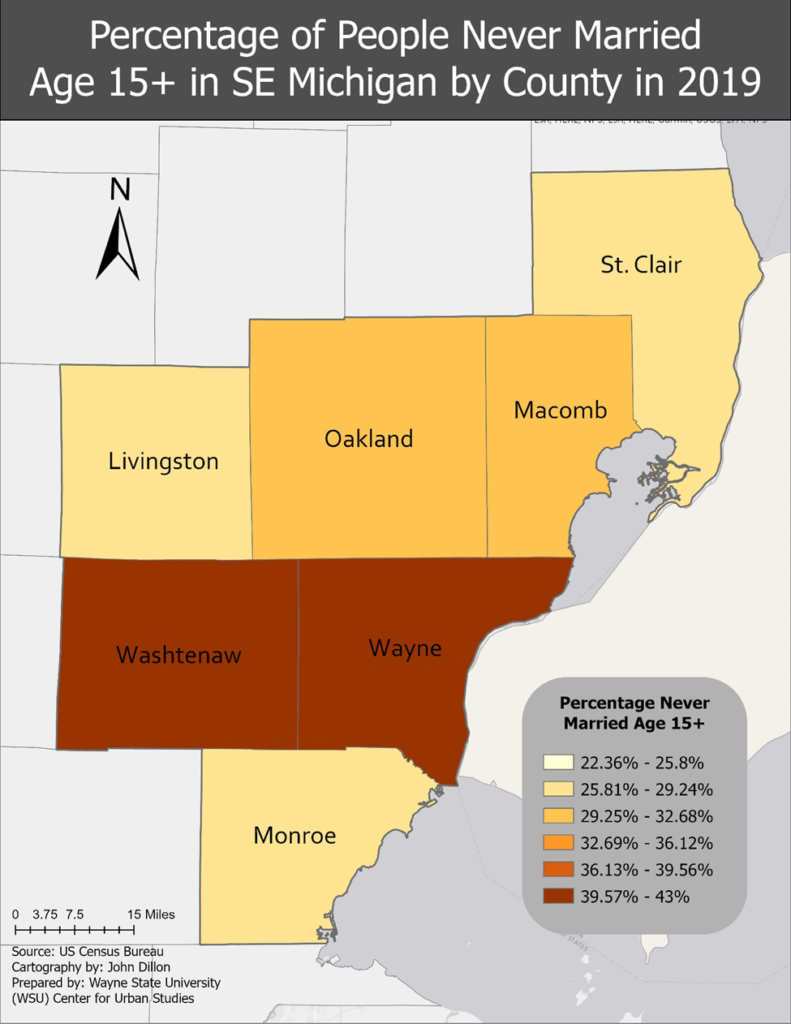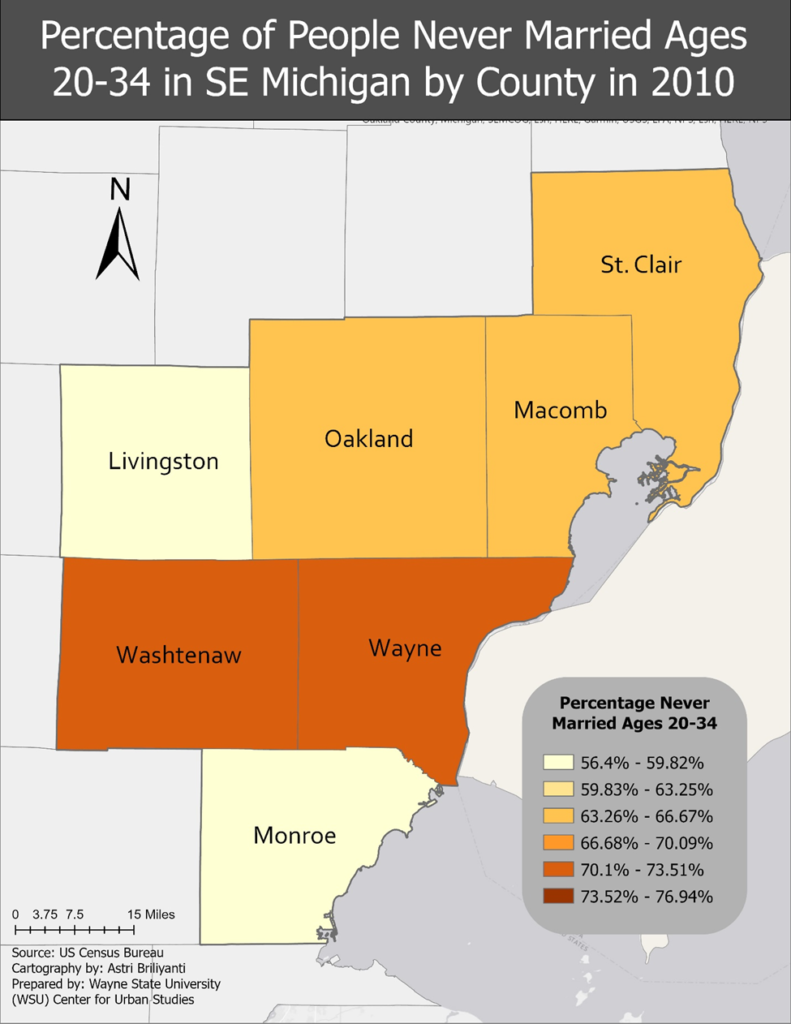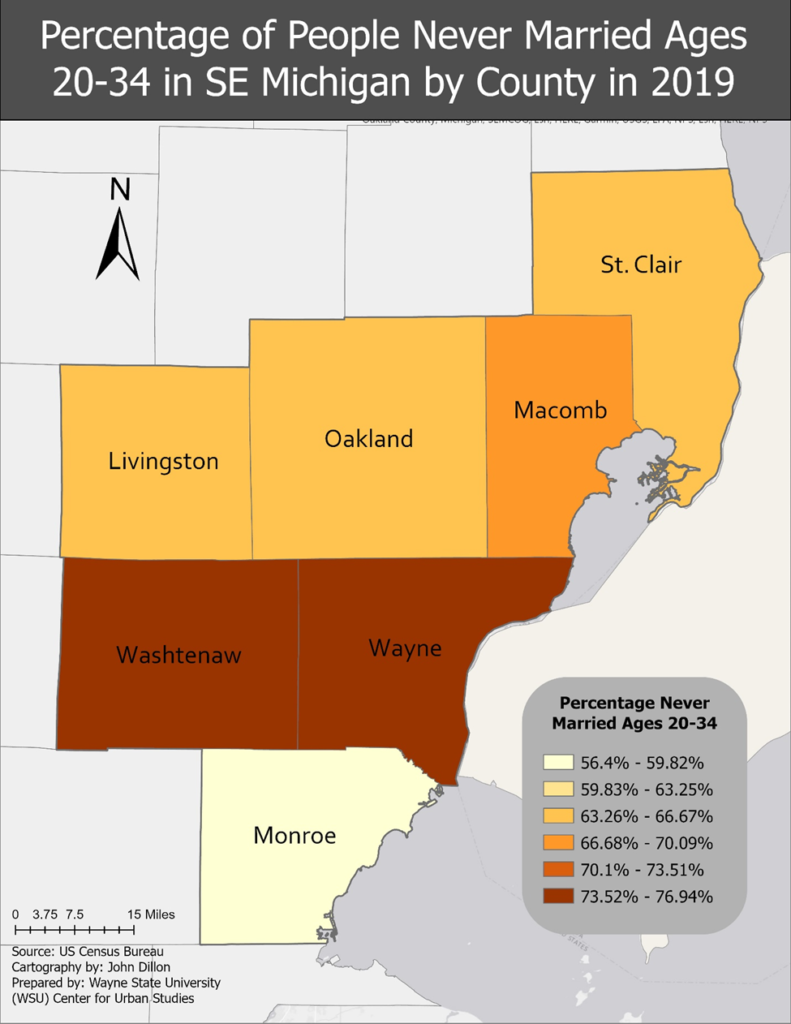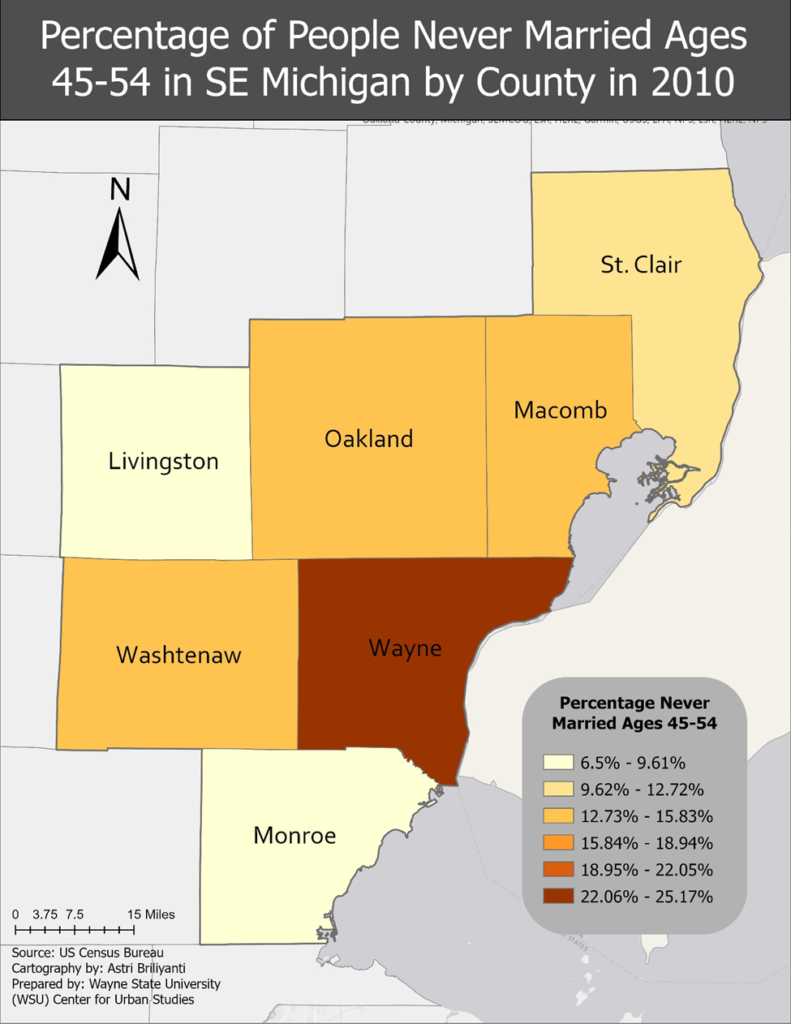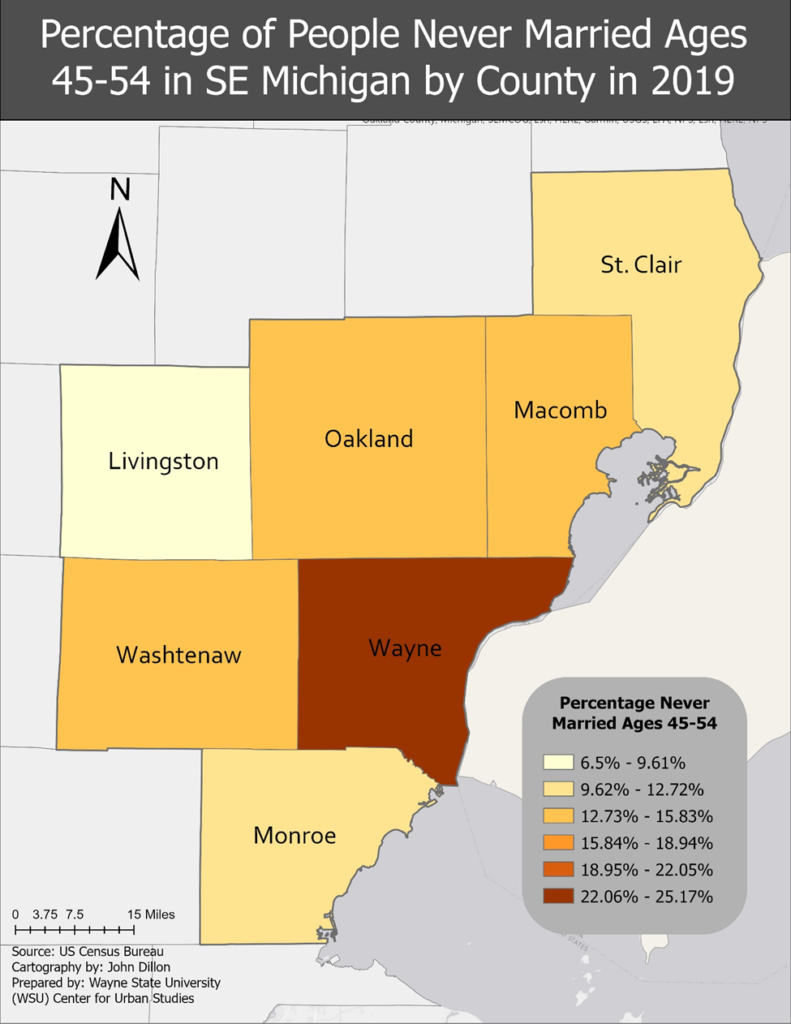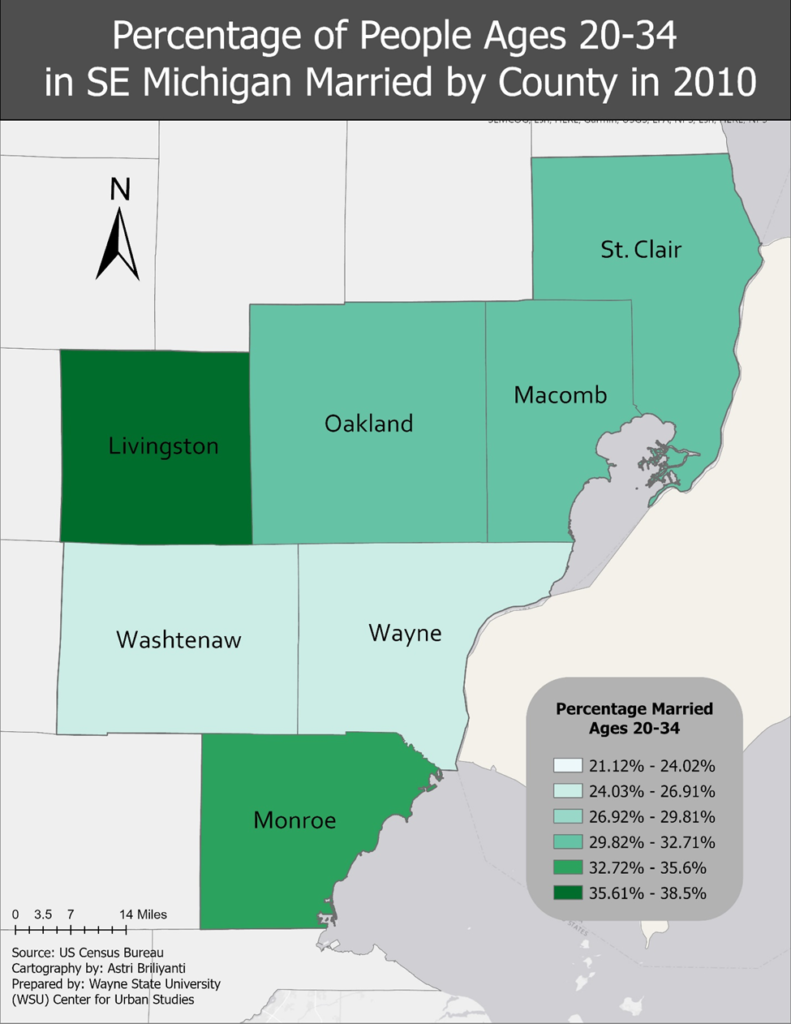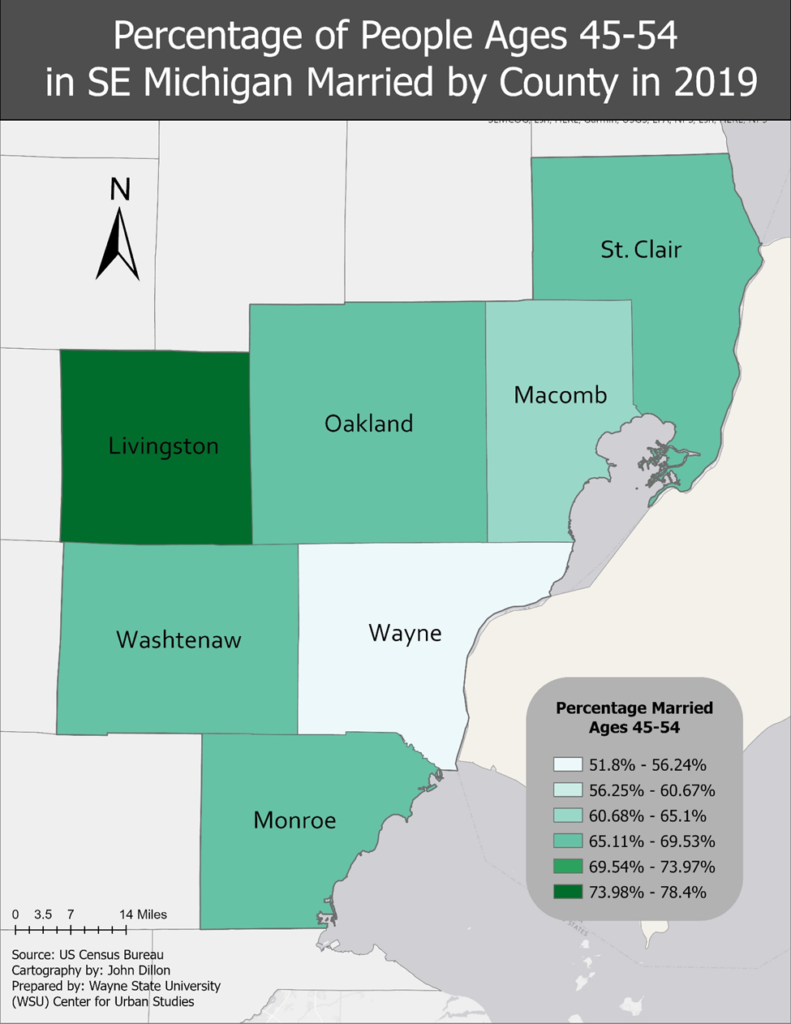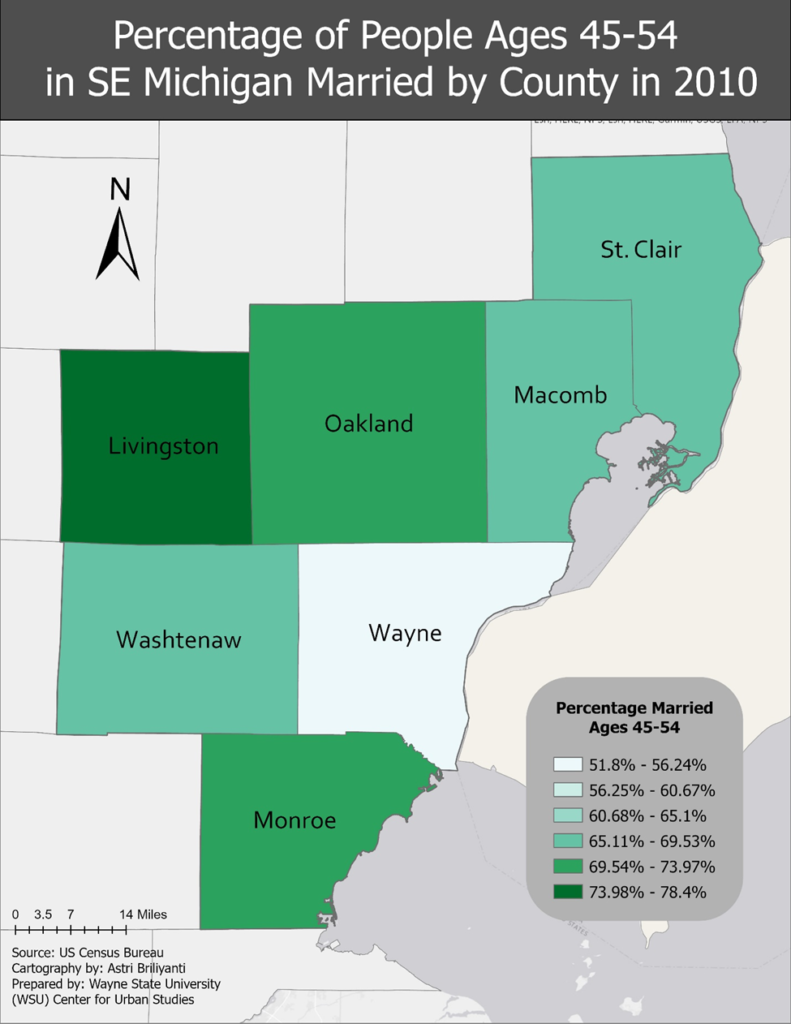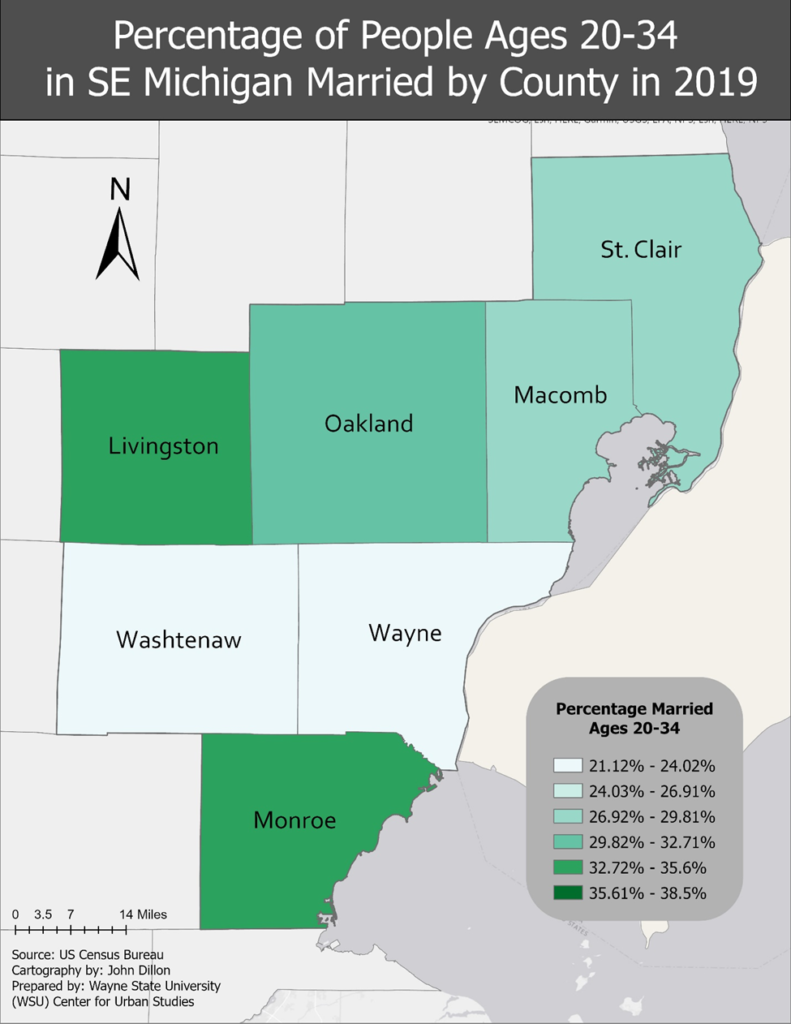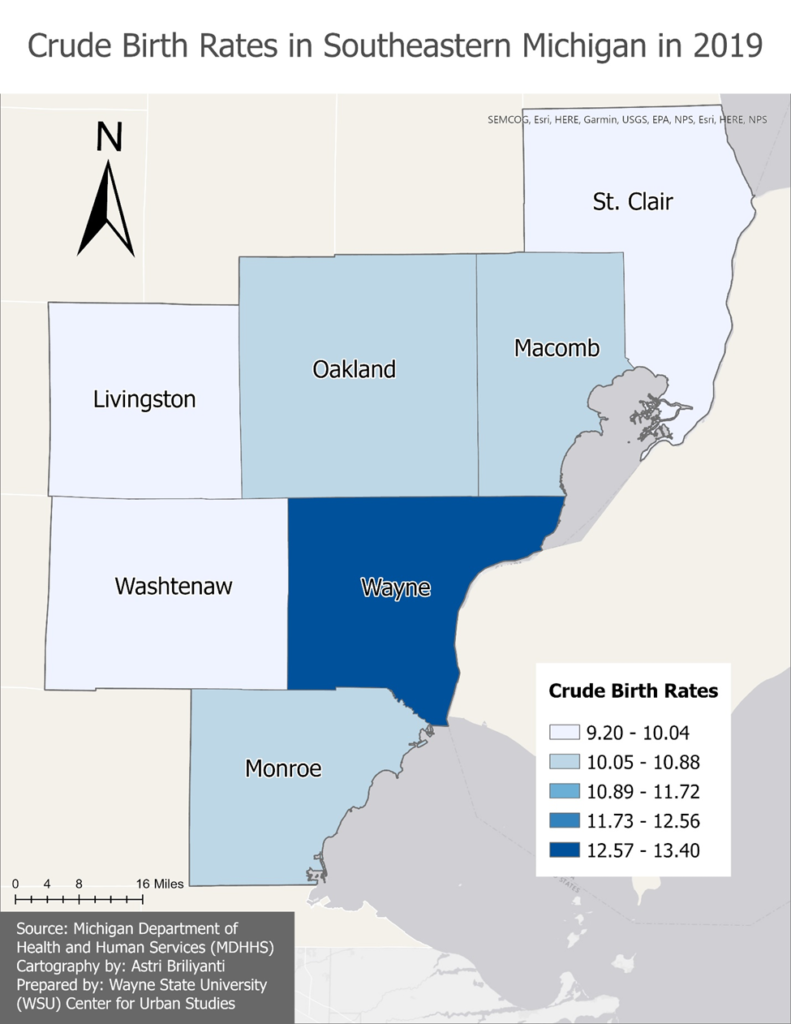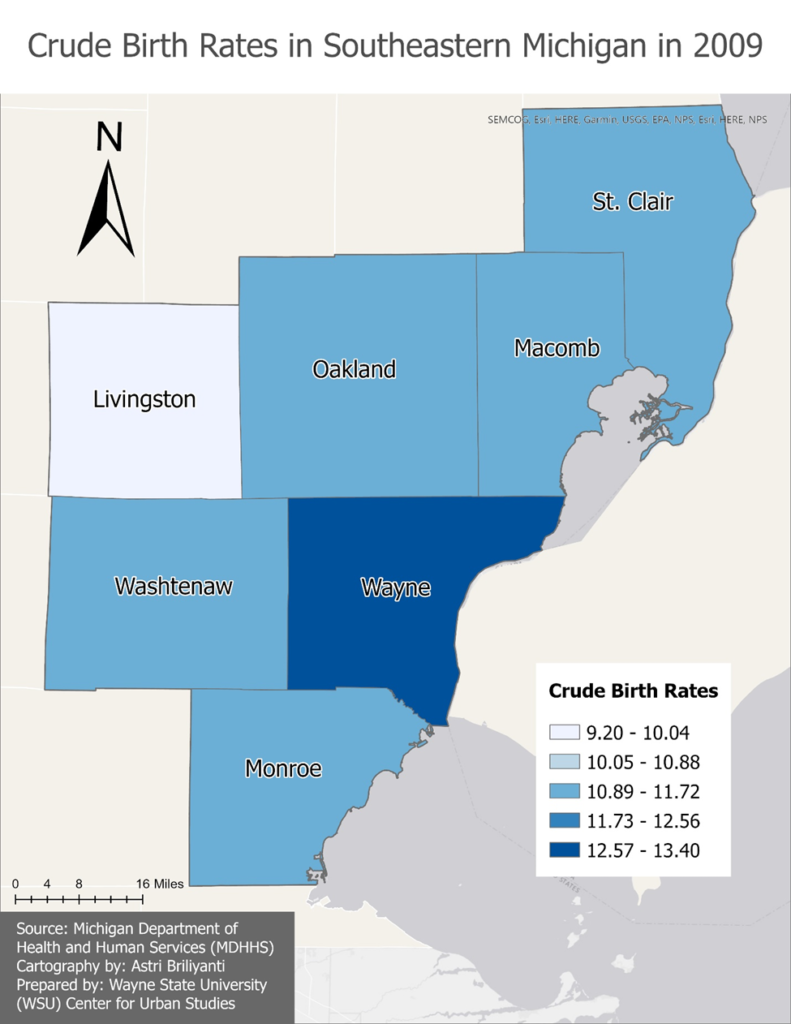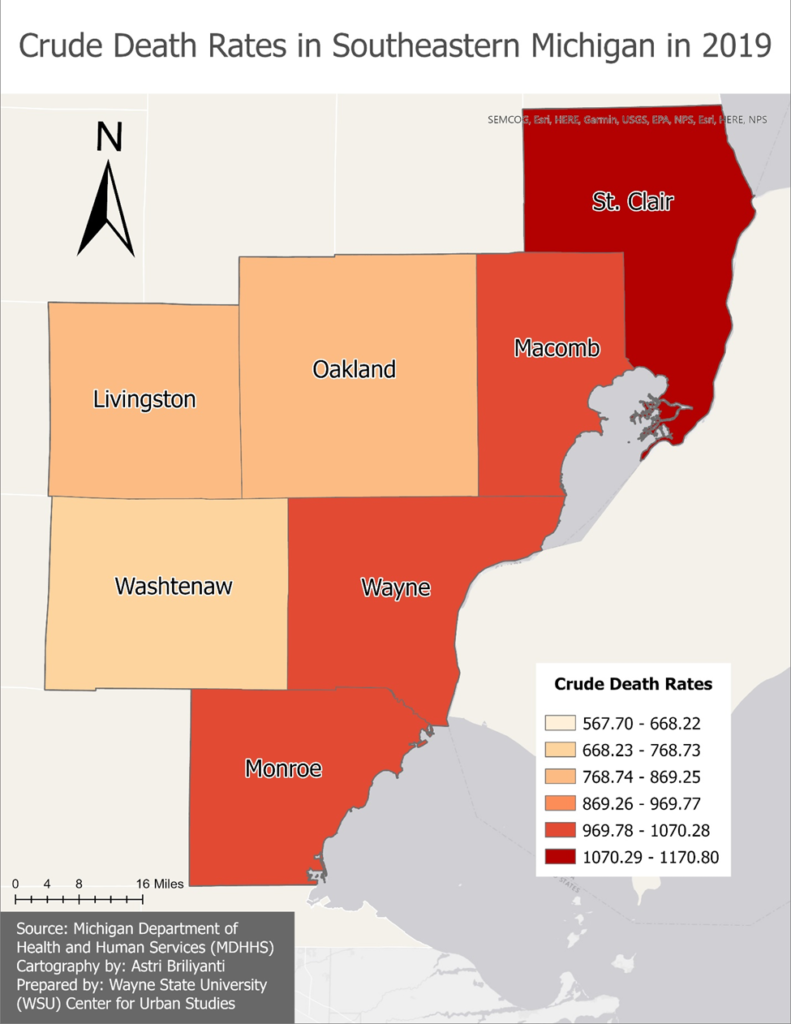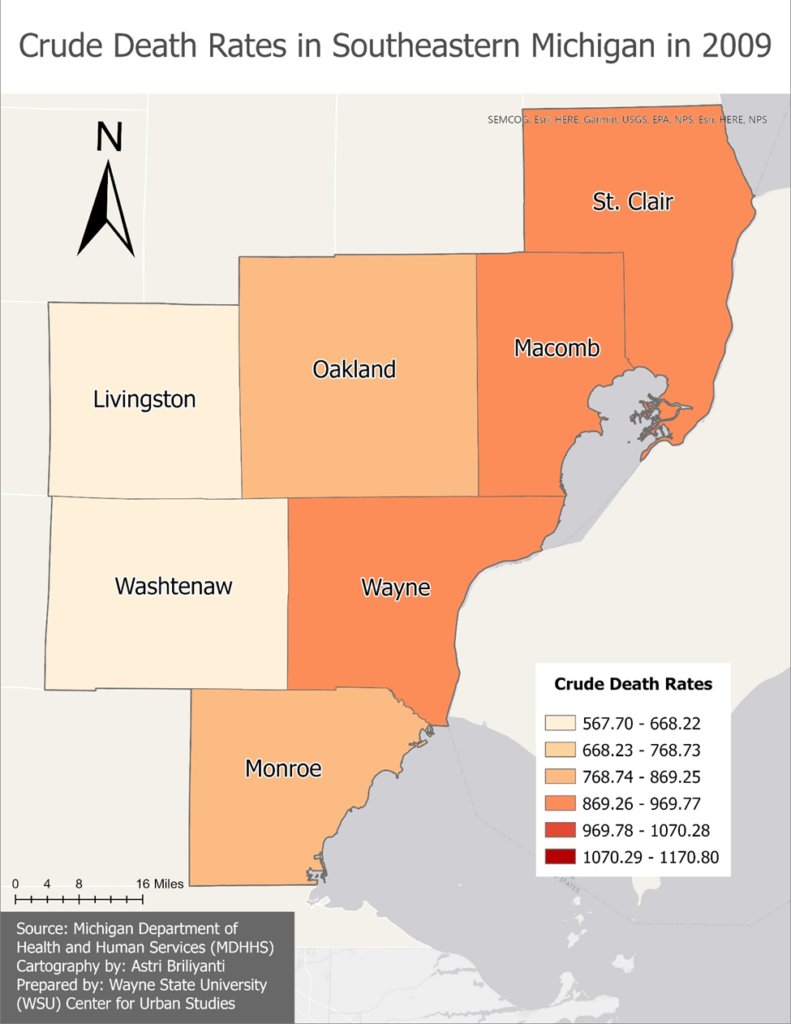In 2020 the Federal Bureau of Investigation (FBI) reported 453 hate crimes in the State of Michigan, an increase from the 434 hate crimes reported the year prior (Chart 1). According to the FBI, hate crimes are defined as a crime motivated by bias against race, color, religion, national origin, sexual orientation, gender, gender identity or disability. In 2020, majority of the hate crimes reported were motivated by race/ethnicity/ancestry (77%). Sexual orientation was the second highest bias that motivated a hate crime at 11 percent, followed by religion at 9 percent in 2020 (Chart 2).
In 2018 and 2019, race/ethnicity/ancestry were also the bias motivator category with the highest number of reported at hate crimes. In 2018 there were 282 hate crimes motivated by race/ethnicity/ancestry, in 2019 there were 313 hate crimes motivated by race/ethnicity/ancestry and in 2020 there were 273 hate crimes motivated by race/ethnicity/ancestry (Chart 3).

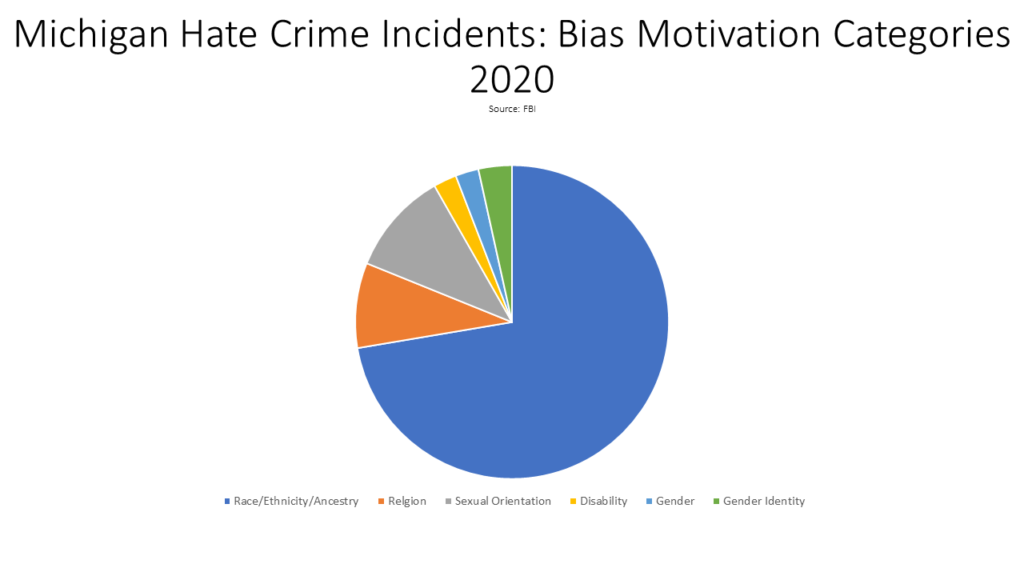

When examining the State Police agencies by county, Wayne County had the highest number of reported hate crime incidents at 5, with the race/ancestry/ethnicity bias motivator category being the highest and only category in which hate crimes were reported under. The Wayne County State Police agency reported 5 race/ancestry/ethnicity motivated hate crimes. Of the seven counties in Southeastern Michigan only Livingston, Oakland, St. Clair, Washtenaw and Wayne reported hate crimes out of their respective State Police agencies. All these counties, except for Oakland and Washtenaw counties only had hate crimes reported under the race/ancestry/ethnicity bias motivation category. The State Police agency located in Oakland County also reported a hate crime under the religion category in 2019, and the Washtenaw County State Police agency also reported hate crimes under both the sexual orientation and gender categories.
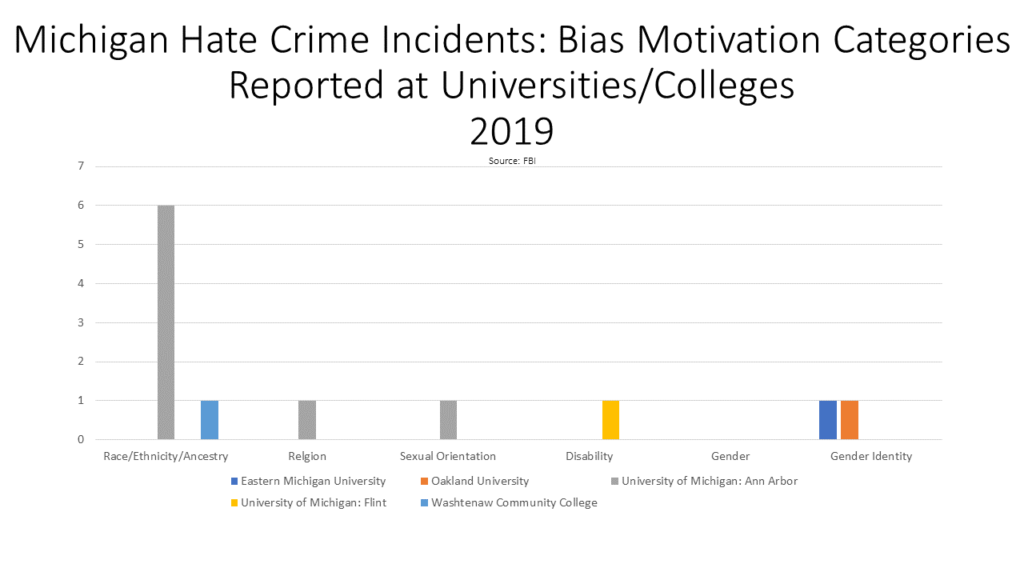

Those who believe they are the victim of a hate crime or believe they have witnessed a hate crime should dial 911 in an emergency situation. Individuals can also report the crime to their local police department and then follow up with the report with a tip to the Federal Bureau of Investigation’s (FBI) tip line at 1-800-225-5324.
